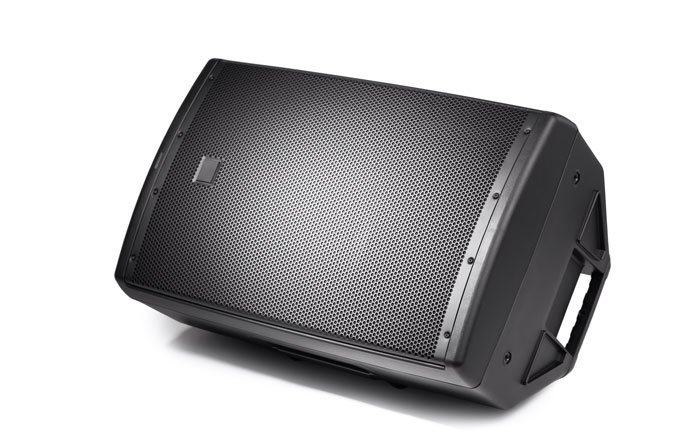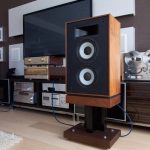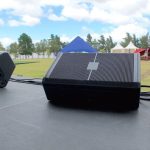Public address speakers, commonly known as PA speakers, are specially made for addressing public gatherings. They spread sound widely in public gatherings, unlike regular speakers. These speakers come in different sizes and power ratings. Some are only ideal for use in small-sized gatherings while others are powerful enough for use in large gatherings such as a full stadium.
Regardless of the type, size, or purpose of a PA speaker, they all experience common issues. It’s good to know the issues that may affect your PA speakers and how to fix them. That way, you’ll stand higher chances of fixing a problem quickly whenever it arises. Read on for the most common issues and faults that affect PA speakers and how to fix them.
Squealing or Screeching Noise
If your PA speakers are producing a squealing or screeching noise, it’s probably resulting from microphone feedback. Microphone feedback occurs when a microphone picks up its own sound from a PA speaker, thereby resulting in a squealing or screeching noise. The main cause of this noise is when a speaker is positioned behind a microphone. The rule of the thumb when setting up a PA system is that a microphone should always be placed behind PA speakers. When using a wireless microphone, the performer should never step in front of the speakers.
You can also prevent this problem by using a directional microphone. A directional microphone only picks up sounds from a certain direction, thereby reducing the likelihood of picking its own sound from a speaker. Another fix for this problem is speaking closer to the microphone. You should also turn off the microphone when not in use. Also, if you’re using stage monitor speakers, they’ll increase the likelihood of feedback. A great fix for preventing microphone feedback that results from stage monitors is using in-ear monitors.
Clipping Noise
If your PA speakers are producing a clipping noise, then there’s a problem somewhere. Clipping noise occurs when a speaker demands more power than what an amplifier can deliver. Once the amplifier reaches its maximum potential, trying to pull more power out of it leads to a distorted signal. As a result, the lowest and highest points of a sound wave are clipped, leading to a clipping noise. Prolonged clipping noise can damage the speakers. Thus, it’s important to fix the problem soonest possible.
Clipping is likely to occur if your loudspeakers are very powerful but connected to a weaker amplifier. The best fix for this problem is ensuring the amplifier you’re using is powerful enough to drive the speakers without struggling. If you’re experiencing this problem, simply upgrade your amplifier with a more powerful one.
Humming, Static, and Buzzing Noise
If your PA speakers are producing a buzzing, humming, or static noise, then it’s likely being caused by a ground loop problem. A ground loop mainly occurs when components of a PA system are plugged into different AC outlets. You’ll need to break the ground loop to get rid of the noise. You can do this by connecting the components via an extension cord attached to a single AC outlet. However, ensure the extension cord and power socket can handle the entire load.
Another solution to this problem is adding a ground loop isolator. The device works by isolating unwanted electrical noise before they become audible. The device is installed between the speakers and amplifier.
A humming, static, or buzzing noise can also result from electric current interference, especially when power cables are running alongside or across the speaker cables. It can also result from electrical cables that are running across or near antenna wires. You can fix this problem by running speaker cables far away from electrical cables. Also, run electrical cables away from antennas. Also, use properly shielded speaker cables to reduce electrical interference.
This problem can also be caused by a blown speaker, especially if the noise is only coming from one specific speaker. In this case, you may open up the affected speaker and check for any tears on the speaker cone. You may repair the cone, replace it, or invest in a new speaker.
If you’ve checked all the aforementioned causes and you’re still unable to get rid of the humming noise, then you’re probably dealing with a faulty power supply. Most sound equipment convert AC current from the mains power into DC using an inbuilt power supply. You can fix the problem by checking the power supply and replacing any faulty component or the entire power supply.
Radio Frequency Interference
Another common issue that affects PA speakers is radio frequency interference (RFI). RFI is a sound problem that occurs when a radio frequency signal finds its way into a sound system, thereby causing unwanted sounds. The problem takes many forms such as sudden noise bursts, buzzing noise, and popping or crackling noise. The most common sources of RFI include mobile phones, AM/FM signals, and walkie-talkies.
RFI can get into a sound system through speaker cables. In this case, use properly shielded speaker cables to avoid RFI. Also, keep walkie-talkies and mobile phones away from speakers and wireless antennas.
Low Volume
If you’ve turned on your sound system but the PA speakers are outputting sound in low volume, then it’s likely that the volume levels have been turned low. Check the volume levels on the system and turn them up. If turning up the volume levels and configuring the equalizer fail to increase the volume, then you’re probably dealing with a weak amplifier. In this case, upgrade into a more powerful amplifier to feed the speakers with enough power.
Popping or Crackling Noise
A popping or crackling noise can affect either one or more speakers, depending on the source of the problem. These noises affect the overall sound quality. The problem can also damage the speakers. If you notice these noises, the first thing to do is to stop using the speakers until you’ve fixed the issue.
One of the most common causes of a popping or crackling noise is interruption in the current feeding the speakers. Speakers require enough power to move air and produce sound. If the current is interrupted, the speakers may pop or crackle and stress them, leading to higher chances of speaker damage. If you notice a popping or crackling noise, check the speaker cables for any signs of damage such as tear and wear. Also, check whether the connections between the speakers and amplifier are tight enough. Replace any faulty cables.
In case the speaker cables don’t have any problem and the connections are tight enough, and the problem is only affecting one speaker, open it up and check whether a soldering connection is loose. Re-solder any loose connection to fix the problem.
Audio Distortion
Distortion occurs when the original sound signal changes into an unwanted sound. One of the main causes of distortion in PA speakers is overloading a microphone with sound. As a result, the microphone sends distorted signals to the speakers. For instance, if you place a microphone too close to a sound source, then it can cause distortion. In this case, place the microphone a little bit farther away from the sound source, be it your mouth or music instrument. Another fix is using the right type of mic for a specific task. For instance, if a dynamic mic is causing distortion, then switch to a condenser microphone and vice versa.
Another common cause of audio distortion is pushing PA speakers beyond their limit. If the RMS power rating of your speakers is way below that of your amplifier, and you turn the amp volume all the way up, then you’ll likely get distorted sound. In this case, try to turn the volume down gradually until the distortion clears. You’re also likely get distorted sound if the amplifier is under powering your PA speakers. In this case, upgrade to a more powerful amp.
Speakers Are Cutting In and Out
If you notice that your PA speakers are cutting sound in and out, then it’s likely that a cable is poorly connected. You can try to fix this problem by ensuring all the cable connections are tight enough. Also, ensure the cables are not worn out. Worn out cables may cause sound to cut in out and as they are failing to send continuous current. Replace any worn out cables.
Also, ensure you’re using the right wire gauge. The rule of the thumb is to use a lower gauge wire for longer cable lengths and higher gauge wire for shorter cable lengths. Basically, a lower gauge number means more wire thickness. If you use the incorrect wire gauge, the signal will be weak and may cut in and out. Also, if some components are burning out, they may cut out the signal before failing altogether. Fix or replace any failing components.
No Sound
If you’re failing to get sound from your PA speakers, first check whether one of the equipment in your PA system is turned off. Ensure the mains power outlet is turned on. Also, ensure the amplifier, mixer, and other components are all turned on. If you’re using a powered PA speaker, ensure it’s turned on from the outlet. The power button at the back of a powered speaker should also be turned on. In case one of the equipment is failing to turn on, it’s probably faulty. Maybe the fuse is blown or its power supply is blown. Check it and have it fixed or replaced
Another cause of lacking sound is a bad connection. Probably you’ve reversed the terminals or a cable is not attached to the correct port. Also, maybe a cable is faulty. In this case, try to check whether all cables are connected to the correct terminals and are attached to their respective ports tightly. In case a cable is faulty, replace it. You can also lack sound if you’ve muted one of the equipment by mistake. Ensure no equipment is muted.
If you’ve tried all the possible fixes and you’re not getting any sound, then one of the equipment may be faulty. If the problem is only coming from one speaker, probably the speaker is blown and requires repair or replacement. If the problem is affecting all the speakers, then the amplifier is probably faulty and requires repair or replacement.
Conclusion
Hopefully, this guide has given you deeper insight into some of the most common issues and faults that affect PA speakers and how to fix them. By eliminating the possible causes of a PA speaker problem, you’ll be a step closer to identifying the root cause of the issue and having it fixed.
Michael Evanchuk is a San Francisco-based sound engineer with 20 years’ experience installing, troubleshooting, and repairing commercial, automotive, and household sound equipment. Evanchuk owns an auto stereo center, where he offers highly competitive car audio installation and repair services. He has written dozens of articles on different sound engineering topics, all of which have been published in leading journals, blogs, and websites.





